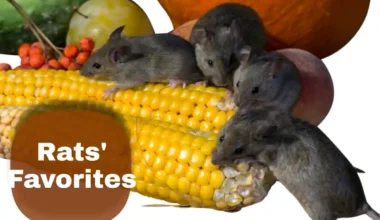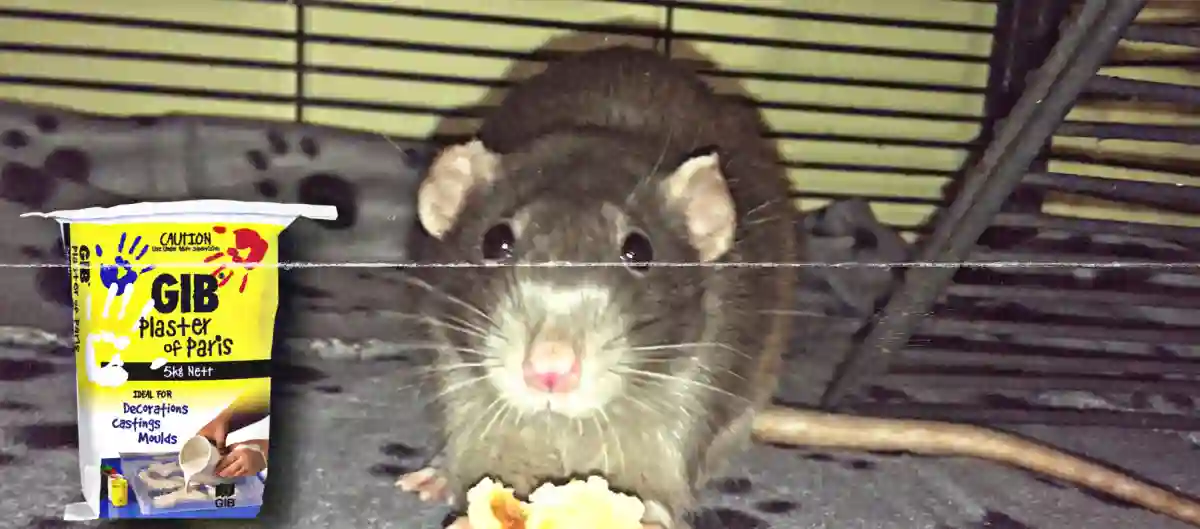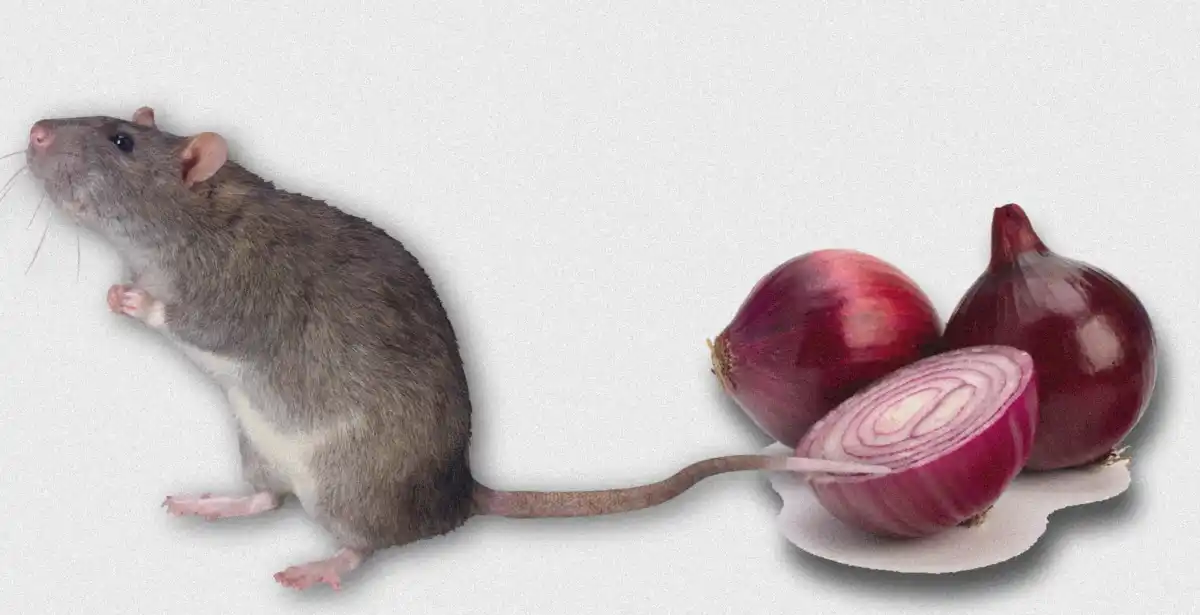Generally, commercial poison baits for rat elimination threaten the health of your pets and native wildlife that eat the dead rodent as part of their diet. Thus, you want to make rat poison with baking soda, a safer homemade bait alternative made from bicarbonate of soda, which is environmentally friendly. This type of bait capitalizes on the biology of rats to get rid of them as they can’t burp or vomit.
How to make rat poison with baking soda

When rats eat baking soda, the bicarbonate reacts with the acid in their stomachs, creating a foam and releasing carbon dioxide gas. However, as they are unable to burp, the gas has no way to escape, resulting in its fatal outcome. That’s the mechanism behind it your baking soda poison.
Sodium Bicarbonate, commonly referred to as baking soda or bicarbonate of soda, is a white, odorless powder or granular substance. It has a salty and slightly bitter taste due to its saline and alkaline properties, with a pH range of 8-9. The substance decomposes at a temperature of 50°C (122°F) and is considered non-toxic. Baking soda is commonly used as a leavening agent in baking, allowing baked goods to rise.
Since rodents are not attracted to baking soda by itself, you have to mix it with other ingredients that they find attractive. Below are ways to make rat poison with baking soda:
1. Baking soda and chocolate rat poison
Rats are attracted to chocolate, including chocolate cake. However, there’s no need to go to the trouble of baking a cake. Simply mixing equal parts of chocolate cake or brownie mix with baking soda will suffice.
Ingredients:
- Chocolate cake or brownie mix
- Baking soda
Materials:
- A shallow disposable bowl (can be created by cutting the bottom portion of a plastic soda bottle)
- milk carton
- yogurt container or a deep plastic jar lid
To make rat poison with baking soda using chocolate cake mix, do the following:
- Combine equal parts of chocolate cake mix and baking soda and mix thoroughly in a shallow container. A few heaping teaspoons of each should make enough bait.
- The mixture can be used in its dry form, provided that a separate shallow bowl of water is available for the rat to drink from, as they require water when eating dry food.
- Use the mixture in a wet form by adding a small amount of water gradually and mixing thoroughly, continuing to add more water until it forms a thick paste.
- Finally, place the shallow container with the bait near walls or in areas frequented by rats.
Leave the bait in the same location for a few days, as rats tend to be cautious and may examine the bait for some time before eating it once they feel secure.
2. Rat poison with sugar plus baking soda
Combine flour, sugar, and baking soda by adding 2/3 cup (85 g) of flour and 2/3 cup (135 g) of sugar into a small bowl. Mix them evenly to create a blend that will lure the rat toward the baking soda. Next, add an equal amount of baking soda to the mixture and stir it thoroughly.
An alternative method is to mix baking soda and sugar directly without flour. Alternatively, cornmeal can replace the flour or hot chocolate mix can be substituted for sugar. To ensure the mixture is well combined, blend it in a blender to create a finer consistency. Another alternative is to mix 1 part baking soda with 2 parts peanut butter.
Place the containers in the areas where rats have been spotted, such as near the stove or shed, and along their pathways. If you notice any areas where rats have dug, position a container nearby for them to nibble on. Search for rat droppings, which are small and oblong, as this can indicate where rats are likely to be present.
The baking soda reacts with the acid in the rats’ stomachs, producing a buildup of carbon dioxide, ultimately leading to the rat’s demise.
3. Rat poison with baking soda using peanut butter
Rats are highly attracted to peanut butter, likely due to its rich composition of sweetness, fats and oils, protein, and strong odor. So, for this part, you will learn how to make your own peanut butter baking soda rat poison.
Ingredients:
- Peanut butter
- Baking soda
Materials:
- Small disposable saucers (can be made from plastic jar lids or by cutting down a plastic bottle or milk carton.
To prepare rat poison with baking soda and peanut butter rodent bait, do the following:
- Mix equal parts of peanut butter and baking soda until well combined in a small container. A few heaping teaspoons of each should be enough.
- Add two or more heaping teaspoons of the bait mixture onto each disposable saucer.
- Place the saucers with the bait near walls or in areas frequently visited by rats.
Allow your poison with baking soda to sit in the same location for a few days. Rats tend to be cautious and may inspect the bait before eating it once they feel safe.
4. Poison rat bait with flour and baking soda
This rat poison with baking soda recipe uses a combination of ingredients to create a dough that attracts them. Here’s what you’ll need:
- Flour of any type
- Baking soda
Materials:
To make the rat poison with baking soda, you’ll also need:
- Small disposable saucers (can be made from a plastic jar lid. Cut from a plastic bottle or milk carton
Below is how to make rat poison with baking soda using flour and sugar bait:
- Mix equal parts flour, and baking soda in a small container. For extra appeal, add a small amount of chocolate powder or sprinkles. Stir the mixture well until combined.
- Gradually add a little water to the mixture, stirring until a firm dough is formed.
- Add 2 or more teaspoons of the bait mixture onto each disposable saucer.
- Place the saucers in areas where rats are known to frequent, such as along walls or in narrow spaces.
Allow your baking soda rat bait to sit in the same location for several days. By then, rats would have cautiously examined the bait and considered it safe for eating.
Where to place your baking soda rat poison
Rats have poor eyesight, about 20 times worse than humans. Their depth perception is not also good, so they find it hard to judge whether objects are close or far away.
However, their caution compensates for it as they prefer to walk from one place to another along walls or established paths, and avoiding open spaces.
With this in mind, we can make the rat poison with baking soda more effective by positioning two or more baits spaced about 2 meters apart along the wall or rodent trails.
Their sense of smell, on the other hand, is highly developed, and they tend to reject anything contaminated with a human scent. Thus, you have to wear gloves while handling your bait containers and traps to eliminate your scent.
How much baking soda kills rats?
The LD50, which stands for Lethal Dose 50%, is a metric of acute toxicity, and it represents the amount of a toxic substance required to kill 50% of an exposed population within a specific period. The LD50 of Sodium Bicarbonate for rats, when ingested orally is 4,220 mg/kg.
Rats are much larger in size, with body weights ranging from 200-500 grams. Using the lethal dose of 4,220 milligrams per kilogram or 4.22 milligrams per gram of body weight, it would take an amount of 72-105 milligrams of baking soda to kill exposed rats.
In recipes like flour, chocolate, and peanut butter, the amount of baking soda used is either half or a third of the total ingredients. As a result, rats would need to consume two to three times the weight of the prepared bait to achieve a 50% mortality rate.
The highest quantity that would need to be ingested by the largest rats to reach a 50% mortality rate would be around 200-300 milligrams of bait, depending on the formulation. To achieve a higher mortality rate, the quantity would need to be doubled, resulting in 400-600 milligrams, or 0.4-0.6 grams. This is a relatively small amount to consume, especially when compared to a teaspoon of water, which weighs approximately 5.0 grams, or ten times as much.
How quickly does baking soda kill rats?
I can confirm that it takes between 24 and 36 hours for baking soda to kill a rat. In some cases, it can be a little less than 24 hours, depending on the weight of the rat.
Given that the chemical reaction between sodium bicarbonate and the stomach acid of rodents is very rapid, it can be a relatively quick process.
Try dropping half a teaspoon of baking soda into a glass containing a couple of centimeters of vinegar, and watch how quickly it fizzes, froths, and expands. It is recommended to perform this experiment in the kitchen sink to avoid a mess.
Based on my biomedical science background, I speculate that the rapid swelling of the rodent’s stomach would likely lead to compression of the diaphragm muscles, which control breathing, resulting in the suffocation of the rodent.
There are numerous online claims that baking soda bait kills rodents by rupturing their stomach, but I have doubts about this being the case, and without conducting an autopsy, this claim would be difficult to verify. This is a rather unpleasant subject to consider, which may explain why nobody has attempted to time the death of rodents after ingesting the bait.
Compared to commercial poison rat baits, using baking soda as a rat and mouse bait is much more humane. Commercial poison baits take a week or two to work through a slow internal hemorrhage, which is a prolonged and gruesome way to eliminate pests. On the other hand, with baking soda baits, there is no risk of other wildlife or pets being poisoned if they consume the dead rodents.
Rats won’t burp or vomit the baking soda toxin
The act of vomiting is a natural defense mechanism to eliminate toxic substances from the body. However, this reflex is not possible for rodents such as rats, mice, rabbits, and guinea pigs due to a combination of physiological and neurological limitations.
The physiological factors that prevent vomiting include a weak diaphragm, which is the muscle sheet located beneath the lungs, and the anatomy of the stomach that does not allow for the regurgitation of its contents.
Vomiting is a complex reflex controlled by specific neural circuits in the brain. It is believed that two separate centers, the vomiting center and the chemoreceptor trigger zone (CTZ), located in the medulla oblongata, play a crucial role in the regulation of this reflex. The medulla oblongata is a part of the autonomic central nervous system that connects the brainstem directly to the spinal cord and is situated at the base of the brainstem.
When scientists conducted studies on the brainstems of laboratory mice and rats, administering drugs that would typically induce vomiting in other animals, they observed reduced activity in the nerves, mouth, throat, and shoulder regions that are normally associated with the act of vomiting. This suggests that rodents lack the neural circuits necessary for vomiting.
This is why rat and mouse poison is so effective, as once they consume the toxic bait, they are unable to vomit it out and eliminate it from their system.
However, rodents have developed alternative methods to avoid ingesting or being exposed to toxins. They rely on their sense of taste to avoid consuming substances that could make them ill or prove fatal. If they have already ingested something toxic, they will consume clay to absorb the toxins, thus preventing them from being absorbed into their bodies. This behavior, known as pica, which involves eating non-nutritive substances such as kaolin (clay), is a response to illness in rats and is similar to vomiting in other species. It may be regulated by the same mechanisms as vomiting in humans.
Final thoughts – make rat poison with baking soda
Rats reside in unsanitary conditions and can spread diseases to humans, creating a potential health concern. The most prevalent illness transmitted by these rodents is Salmonellosis, which occurs when food is contaminated by their saliva or feces, carrying the Salmonella bacteria. Considering these concerns and potential property damage, it is advisable to quickly take measures to get rid of rats from your home. If you suspect a severe rat problem, contact your landlord or local pest professional.






